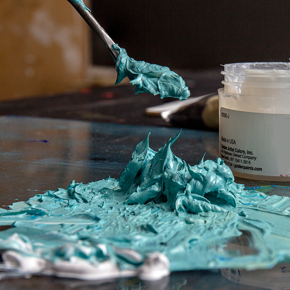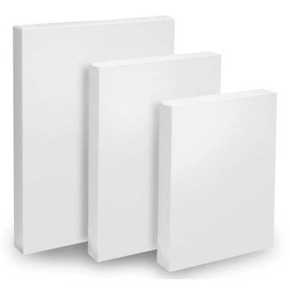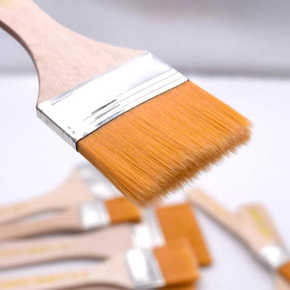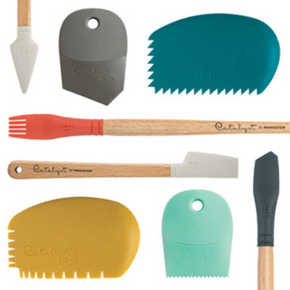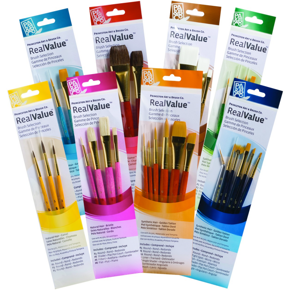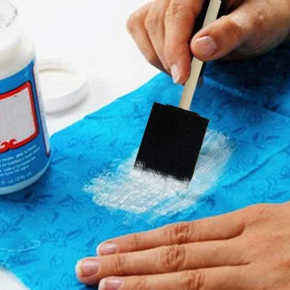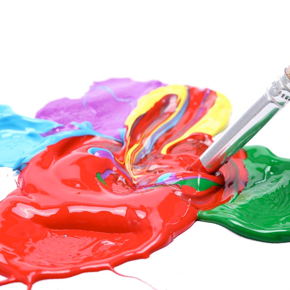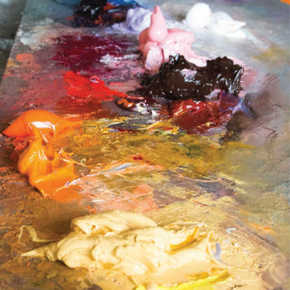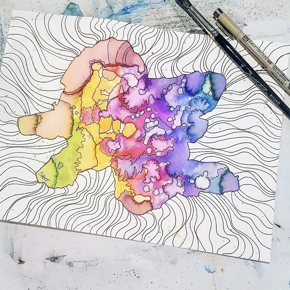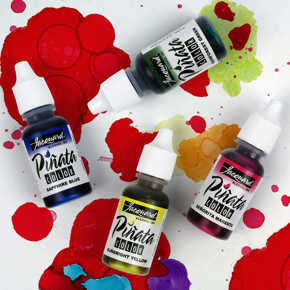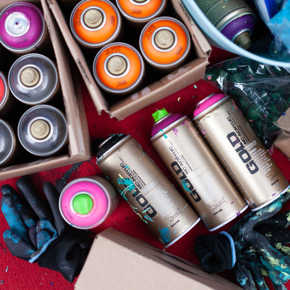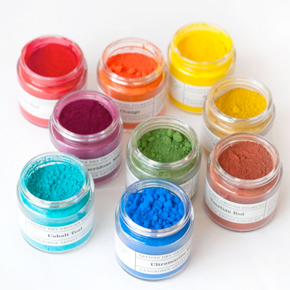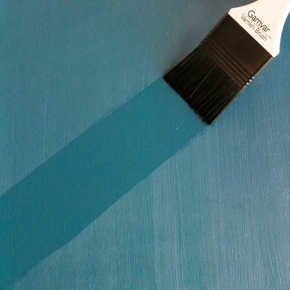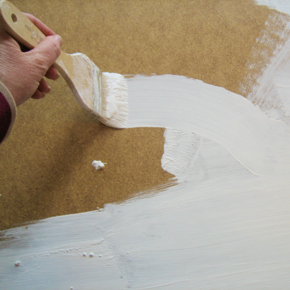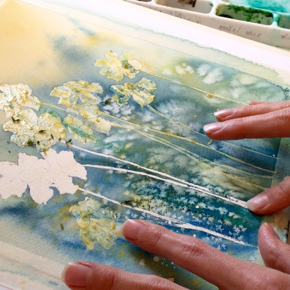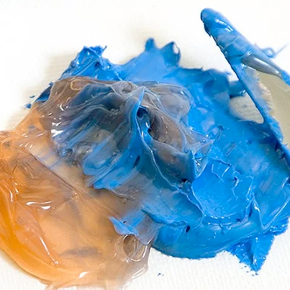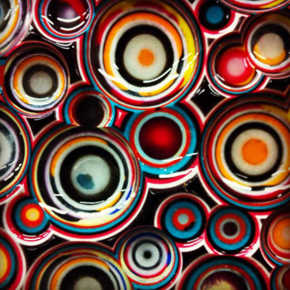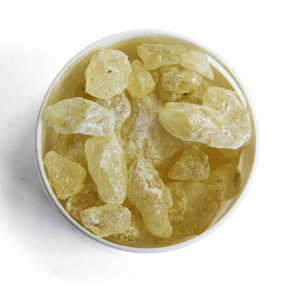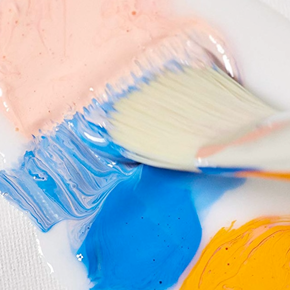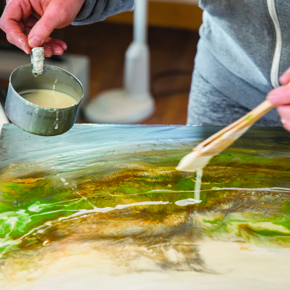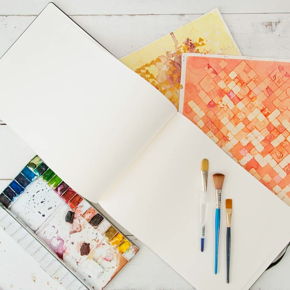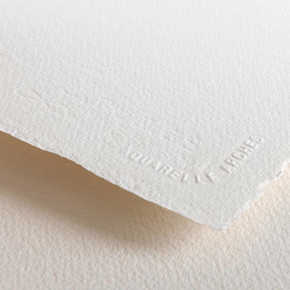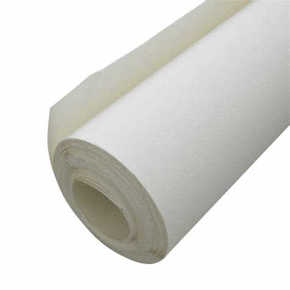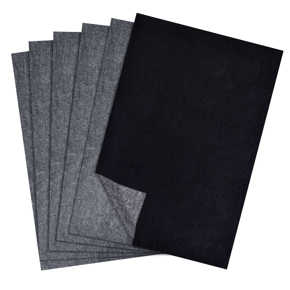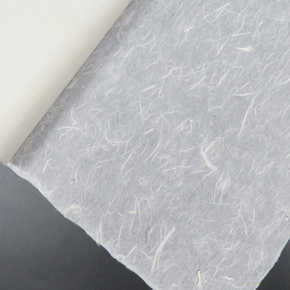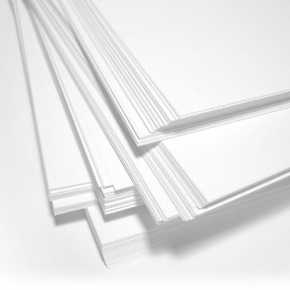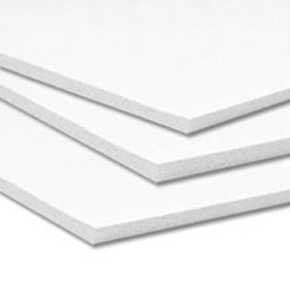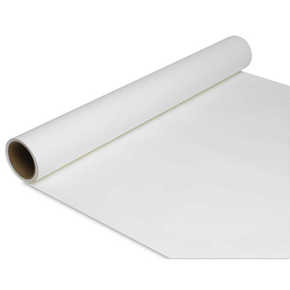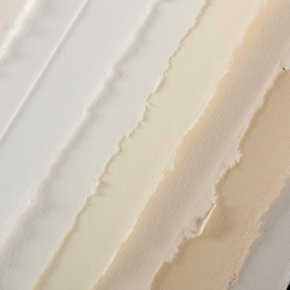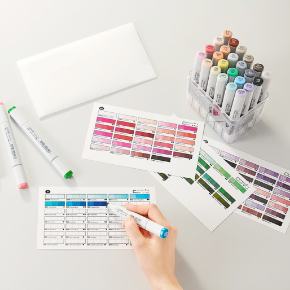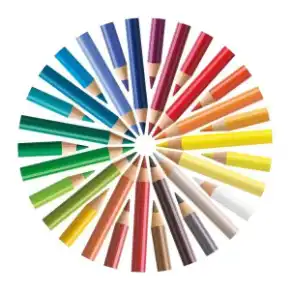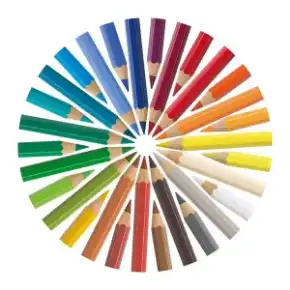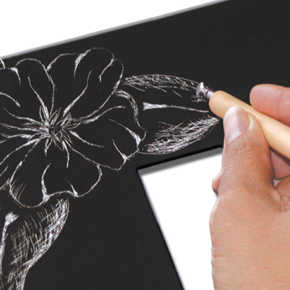Gessos & Grounds
Prepare surfaces for painting with Art to Art’s range of gesso primer and grounds. Whether you’re doing acrylic, watercolour or oil painting, you can find the perfect primer for you. Choose from the best brands, including Matisse, Mont Marte, Golden and Art Spectrum. Shop artist gesso online today at affordable prices and get free shipping when you spend over $100.
Golden GAC 100
Atelier Binder Medium
Matisse White Gesso
Matisse Gesso Black
Matisse High Tooth Gesso
Mont Marte Black Gesso
- 1
- 2
Gessos & Grounds
Use our range of high-quality gesso primers to prepare canvas, paper, card, wood and a number of other surfaces. The consistency and texture of gesso can differ significantly depending on the brand. Some brands offer gesso that is more fluid, making it easier to spread thinly across large surfaces. On the other hand, there are thicker varieties which are great for creating more texture. For instance, certain gessos apply very smoothly, providing a sleek, even finish. In contrast, others create a textured or "toothy" surface, ideal for additional layers of paint to grip onto.It's essential to experiment with various brands to find the one that suits your needs. Ever wondered what gesso is and why it's essential for your acrylic painting projects? Let's unravel the mystery. Gesso is a foundational art supply that primes your canvas, ensuring it's ready for paint. Imagine painting directly on raw canvas - the paint would simply seep into the fabric, yielding uneven and unpredictable results. Gesso creates a barrier that prevents this.
Without gesso, the paint would soak into the weave of the canvas. When you buy a pre-stretched canvas, it’s usually already primed, so you don’t need to apply any extra gesso. However, they are often under-primed, and a few more coats can make a huge difference.
If you're looking to achieve a perfectly smooth and adequately primed surface, experimenting with additional layers of gesso can be beneficial. Try priming one canvas with just the pre-applied layer, another with two coats, and perhaps a third one with three coats. This will allow you to feel the difference in the canvas's texture and how well it accepts the paint. Generally, applying at least two layers of gesso is advisable to ensure complete coverage and to avoid any paint absorption into the canvas fibers.
Sometimes, during the application of gesso, you might notice lumps or streaks forming at the edges of your brushstrokes. To handle this, use a separate dry brush to smooth out these imperfections, ensuring a consistent layer across the entire canvas surface. This technique helps maintain the integrity of your additional gesso layers, providing a sturdy, reliable base for your artistic work.
To achieve a smooth coat of gesso on a canvas, begin by applying thin layers of gesso with a brush, using smooth, even strokes. As you work, you might notice lumps or lines forming at the edge of each brushstroke. To address this, use a separate, dry brush to gently smooth out these imperfections before they dry. This ensures a more even application and prevents any unwanted texture on the surface.
Allow each layer of gesso to dry completely before applying the next one. During these drying intervals, take the opportunity to sand the surface lightly with fine-grit sandpaper. This helps to remove any bumps or imperfections that have formed and contributes to an ultimately smoother coat.
Repeat this process—applying thin coats, smoothing with a dry brush, and sanding between layers—until you achieve the desired smoothness. This methodical approach ensures that each layer contributes to a flawlessly smooth finish, ready for painting.
- Consistency and Control: Gesso gives you a consistent surface to work on. This ensures your brushstrokes behave as expected, making it easier to achieve your desired effects.
- Surface Durability: Once applied, gesso dries to a hard finish, which makes the canvas more durable. This added stiffness provides a stable platform for your artwork.
- Improved Adhesion: Acrylic paint adheres better to a primed surface. This is crucial for longevity, preventing your masterpiece from deteriorating over time.
Think of gesso as your canvas's best friend, working behind the scenes to make your painting experience smoother and your artwork more vibrant. So next time you're prepping for a painting session, don't skip the gesso – it's your secret weapon for success.
Types of gesso primer
Gesso primers can be used for a variety of artworks, including acrylic, watercolour and oil paintings. You can also choose from a number of varieties of gesso paste and grounds, such as:
- White
- Black
- Transparent & Clear Primers
- High tooth (encaustic)
- Non Absorbent Primers
- Pastel Primers
When comparing Artist grade and Student grade gesso, several key differences stand out. Primarily, Artist grade gesso contains a higher concentration of pigment, which enhances its thickness and opacity. This results in a more robust and consistent coverage on canvases or other materials. In contrast, Student grade gesso includes more fillers, which makes it less expensive but also affects its quality and performance.
Further, the price disparity between these two types reflects their quality difference. Artist grade gesso, being of higher quality, is typically priced higher than its Student grade counterpart. Additionally, Artist grade gesso offers more versatility in terms of colour availability. While Student grade is generally only found in white, Artist grade may be available in various colours, although it can also be mixed with acrylic paints to achieve desired hues. This adaptability makes Artist grade a preferable choice for professionals who may need specific colours for their projects.
Step-by-Step Guide to Making Tinted Gesso
- Choose Your Gesso: Start with any basic gesso. While traditional gesso is white, there are also black, clear, and various coloured gessos available.
- Select Your Acrylic Paint: Pick the acrylic paint colour that you want to add to the gesso. The choice of colour depends on the effect you are aiming for in your artwork.
- Mix It Up: In a mixing bowl or container, combine the gesso with a small amount of your chosen acrylic paint. The amount of paint will depend on how intense you want the colour of the gesso to be. A general rule of thumb is to start with a little paint and gradually add more until the desired hue is achieved.
- Test Your Gesso: Before applying it to your main project, test the tinted gesso on a scrap piece of material. This helps ensure the colour and consistency are exactly what you need.
By following these simple steps, you can create custom tinted gesso that enhances the aesthetic of your art projects. Whether you're preparing canvas backgrounds or adding layers to mixed media pieces, tinted gesso can provide a unique foundation that brings your creative visions to life.
Absolutely, gesso can be mixed with a variety of materials to enhance your art projects. Here’s how you can combine it with others:
- Coloured Acrylics: Mixing gesso with coloured acrylics is a fantastic way to create a custom tinted gesso. This mixture allows you to prep your canvas with a coloured base, adding a unique depth and personal touch right from the start of your artwork.
- Texture Gels: If you’re aiming to add dimension to your painting, blending gesso with texture gel is a great choice. This combination will give the painting surface a raised, textured effect, providing a tactile quality that can be very visually appealing.
These techniques allow artists to experiment with different backgrounds and textures, making each piece one-of-a-kind.
Can gesso be used on surfaces other than traditional canvas?
Yes, gesso is highly versatile and can be applied to a variety of surfaces beyond traditional canvases, such as vinyl records, rubber duckies, or cigar boxes, making it possible to paint on these items with acrylics.
How does gesso affect the painting surface?
When applied, gesso dries to create a stiffer and slightly textured surface that is ideal for painting. This texturing is essential as it allows the paint to adhere better and not sink into the material, which can affect the vibrancy and durability of the artwork.
Why is gesso necessary?
Gesso acts as a primer for canvas or other painting surfaces, creating a slightly textured layer that prevents paint from soaking into the material, thereby aiding in the adhesion and longevity of the paint applied over it.
What exactly is gesso?
Gesso is a material used by artists to prepare their canvases and other surfaces for painting. It's similar to white acrylic paint but is thinner and dries to a hard, stiff finish.
How to use gesso primer
The following guidance on making the application of Gesso easier:
For watercolour: Use the Watercolour ground straight from the container (it has a thick, brushable consistency). One or two coats will cover most surfaces. Let it dry and cure for at least 24 hours.
If you’re priming non-absorbent surfaces like metal, plastic or glass, you will need to lightly sand them before applying the primer.
For acrylic: Apply straight from the container (you can use a varnish brush or roller without diluting it). When priming for acrylic paints, at least two layers of gesso are recommended to ensure complete coverage.
It may be thinned with water for use on raw canvas or linen. To further ease the application of gesso, moistening the canvas (by lightly spraying with water) before applying the gesso not only tightens the canvas but also makes the application of gesso smoother and easier.
For oil painting: Apply either an oil-based or acrylic-based gesso (but you may need 3 coats). You can thin it out with water if needed. The primer can be painted over as soon as the moisture has evaporated (usually the next day)."
This comprehensive approach ensures that the gesso adheres well and is easier to apply, enhancing the overall preparation for painting across various mediums and surfaces.
FAQs
What does gesso primer do?
Gesso is used to prime a surface, normally raw canvas, Linen or Wodden Boards, to prepare it for painting. This ensures the artist paint doesn’t absorb straight into the art canvas.
What is Non Absorbent Primer?
This may be applied to linen, wood, MDF and other supports to produce a strong, flexible, permanent, highly pigmented ground. Suitable as a ground for both acrylic and oil paint. Note this is a primer, not a gesso! Gessoes or ancillary products are not needed alongside.
Is gesso necessary for acrylic painting?
Gesso prepares the surface for painting, making the surface slightly textured and ready to accept acrylic paint. Without gesso, the paint would soak into the weave of the canvas. When you buy a pre- stretched canvas, it’s usually already primed, so you don’t need to apply any extra gesso. However, they are usually under-primed and a few more coats can make a huge difference.
Do you let gesso dry before painting?
Yes! 48 hours is ideal.
What is the difference between artist-grade and student-grade gesso?
Primarily, Artist grade gesso contains a higher concentration of pigment, which enhances its thickness and opacity. This results in a more robust and consistent coverage on canvases or other materials. In contrast, Student grade gesso includes more fillers, which makes it less expensive but also affects its quality and performance.
Do I need to gesso my canvas if it is pre-primed?
Applying an extra layer or two of gesso can enhance the texture and absorbency of your canvas. This not only makes the painting process smoother but also affects the appearance of your final artwork. With extra gesso, your colors may appear more vibrant and your strokes more precise.




